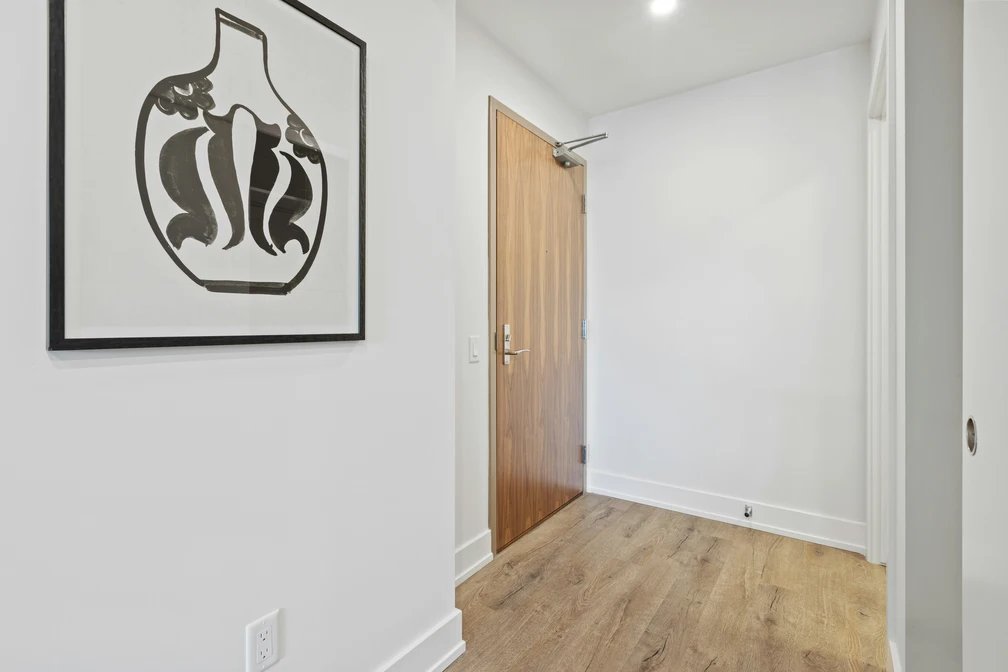Hallways are often overlooked in interior design, seen as merely functional pathways that connect one room to another. But the secret impact of hallway designs goes far deeper than their practical role. Subconsciously, the way corridors are structured influences how safe, comfortable, and energized we feel as we move through our homes. From their width and lighting to the flooring patterns beneath our feet, hallways silently shape our daily mood, sense of flow, and perception of safety.

Why the Secret Impact of Hallway Designs Matters
The secret impact of hallway designs lies in the fact that corridors are transitional spaces. They act as bridges between different parts of the home, but in doing so, they influence pace, posture, and even stress levels. A narrow, dimly lit corridor can make a person feel confined or unsettled, while a wide, well-lit hallway can create openness, relaxation, and balance.
Design psychology tells us that transitions affect our subconscious just as much as primary rooms. Since we move through hallways multiple times a day, their impact compounds into our overall mood and sense of home.
Width and the Secret Feeling of Safety
Corridor width is one of the strongest contributors to the secret impact of hallway designs. Narrow hallways often create a sense of restriction or unease, especially when combined with low ceilings. They can trigger subconscious feelings of being trapped or funneled, reducing comfort. On the other hand, spacious corridors, even just a few extra inches wider, give a sense of freedom and control, enhancing safety.
Many modern homes incorporate open or wider hallways for this reason—they encourage calm movement while reducing subconscious tension.
Lighting and Flow in Corridors
Lighting is another critical factor in the secret impact of hallway designs. Dark hallways can feel ominous or unsafe, especially at night. Harsh, bright lights, meanwhile, may create overstimulation, making a hallway feel clinical. The ideal balance is achieved through warm, layered lighting: recessed ceiling lights, sconces along the walls, or even daylight spilling through strategically placed windows.
Proper lighting doesn’t just improve visibility—it also smooths the psychological flow of moving from one space to another, reinforcing a sense of safety and comfort.

Flooring Patterns and Walking Speed
The floors beneath our feet also contribute to the secret impact of hallway designs. Linear patterns, such as long planks or stripes, subtly encourage faster walking, propelling movement forward. By contrast, soft rugs, irregular stone patterns, or tiles with varied designs can slow down movement, making a hallway feel calmer and more inviting.
For families, choosing the right flooring pattern can influence how quickly children race through hallways or how relaxed guests feel moving from one room to another.
Height and Vertical Space
Ceiling height plays into the psychology of corridors as well. Low ceilings in hallways may create a subconscious sense of compression, especially when paired with narrow widths. Taller ceilings, even slightly elevated, reduce that pressure and create a feeling of safety and breathing space.
Architects often use vertical space in hallways to balance proportions, ensuring corridors don’t feel like tunnels but instead like integral parts of the home.
Decor and the Personal Touch
Bare hallways may feel cold or transitional, almost like an in-between zone. Incorporating decor—artwork, mirrors, or subtle color accents—enhances the secret impact of hallway designs by giving them character and identity. A well-decorated corridor feels like part of the living environment rather than just a passage.
Mirrors, in particular, can make narrow hallways feel wider, while art creates focal points that slow down movement, encouraging people to appreciate the transition rather than rush through it.
The Secret Connection Between Corridors and Daily Mood
The cumulative secret impact of hallway designs is how they shape daily mood. A poorly lit, narrow hallway may cause stress multiple times a day, even if it’s not consciously noticed. Conversely, a warm, well-proportioned corridor creates subtle but continuous reassurance, making the home feel safe, flowing, and balanced.
By intentionally designing hallways, you can transform them from ignored spaces into mood-shaping, safety-enhancing features of your home.

Frequently Asked Questions (FAQs)
Why do hallways influence mood more than we realize?
Hallways are transitional spaces that we move through repeatedly. Even short moments in corridors add up, so their design subconsciously shapes our overall impression of comfort, safety, and energy throughout the day.
How can I make a narrow hallway feel safer?
Use lighter paint colors, mirrors, and warm lighting to visually expand the space. Adding wall sconces or artwork can break up the confinement and make the hallway feel more inviting.
What kind of lighting works best for hallways?
Layered lighting is ideal—recessed ceiling lights for even coverage, complemented by softer sconces or lamps for warmth. Natural light, when possible, enhances flow and comfort.
Can hallway flooring really affect walking speed?
Yes. Linear patterns or directional flooring subtly encourage faster walking, while irregular patterns or softer surfaces slow movement, influencing the rhythm of how people move through the space.
Are hallways more important in small homes?
Absolutely. In smaller homes, hallways often account for a larger percentage of overall space. Their design has a bigger impact on flow and mood, making it essential to use width, lighting, and decor strategically.
Do wide hallways always feel safer?
Not always. Excessively wide, empty corridors can feel impersonal. Balance is key—pairing a comfortable width with warm lighting and decor ensures both safety and emotional comfort.
How do ceiling heights in corridors affect perception?
Low ceilings can create subconscious pressure or confinement, especially in narrow spaces. Higher ceilings alleviate that tension, providing openness and comfort that improve the flow of movement.
What is the best way to decorate hallways without cluttering them?
Opt for wall-mounted décor like framed art, mirrors, or slim shelves. Rugs can add softness underfoot without taking up space, while subtle color accents bring warmth without overwhelming.
Want More Blogs Like These?
Check out more unique insights on how hidden and secret design elements influence safety, comfort, and flow in your home—only on Living Spaces on Designs24hr.







